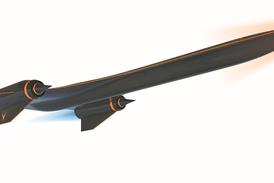 Q: ATR has enjoyed a good year for sales. What is the current backlog of orders and what do you estimate it might be at the end of the year?
Q: ATR has enjoyed a good year for sales. What is the current backlog of orders and what do you estimate it might be at the end of the year?
A: The backlog today is 70 aircraft, and the fact is that since the beginning of the year we have been able to move from having a backlog of just seven aircraft to 70 now. I would not want to talk about what we expect at the end of the year. I think that that kind of number is always a bet, so I prefer to talk about the backlog.
Q: What is driving this revival of turboprop sales?
A: It is clear that the market has changed. Airlines are looking at the turboprop in a totally different way from a couple of years ago.
The new generation of turboprop provides for a very high degree of comfort for passengers. It is not like the old style of turboprop. It has virtually been reinvented. One side is the comfort of passengers which is a selling point for airlines and the other is the huge difference in direct operating costs between the jet and the turboprop.
A: How do turboprops stack up against regional jets in today’s environment?
Q: In the short and medium sectors, the turboprop, depending on the airline, makes a big saving in respect of jets. The airlines recognise this. We are talking about savings of $20-30 per seat in direct operating costs. It is in the 30-, 50- and 70-seater markets that the turboprop is really coming back.
Q: US regional SkyWest Airlines is reported to be studying a return to turboprops: what is your assessment of the American market?
A: So many airlines became wedded to jets. Now some airlines are talking about leaving their ‘wife’. Some are beginning seriously to consider the turboprop. The speed of the translation of this consideration into orders is related to the capacity of American industry to recover from its economic crisis. We understand that with all the problems they have on their table, it is very difficult for them to think about new investment.
Q: What are the prospects in the Middle East region and further afield?
A: We are in discussions in Egypt, where we have many years of operations. There is a great deal of interest in India. The deal for Air Madagascar is interesting because all of the airlines are looking at each other. In West Asia, we are proceeding with deliveries of aircraft to Air Deccan. In Asia Pacific we recently achieved an order of three plus two aircraft with Air Caledonie.
Q: The transformation of the fortunes of ATR has followed that of the turboprop. Was there a point when the very future was in question?
A: In 2003 deliveries were nine aircraft. Obviously when you are down to nine aircraft, there are conversations about whether you go on. Then we started to understand that the market was changing. Today the story is different because I am moving to 30 aircraft.
Q: What challenges do you face as you now work to increase production?
A: In 2006 production is targeted at 23-24 and in 2007 to at least 30. There are challenges but ATR has been used to producing up to 50 a year in the past. Last year we started re-engineering the supply chain so we are well prepared.
Q: You plan to move your spares hub from Toulouse to a major centre in Europe. Have you decided where?
A: I think it will be Paris. At the same time we will reinforce our spares network by opening new centres where there is a strategic requirement. Today we have Singapore and Washington. Tomorrow we will open in India. Soon we will be in New Zealand to cover Asia Pacific.
Q: Were you always confident that the turboprop market would recover?
A: Maybe last year I felt a little alone in my view of the turboprop market. But this year when I met colleagues [at the European Regional Airlines Association General Assembly] in Gothenburg I find that everybody is saying the same.
Source: Flight Daily News























